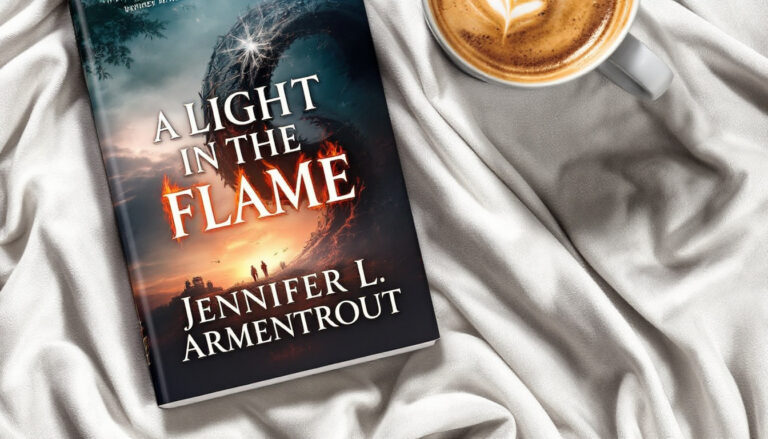A Thoughtful Review of – The Light We Lost by Jill Santopolo
In “The Light We Lost,” Jill Santopolo crafts a poignant narrative that explores love, loss, and the decisions that shape our lives. Set against the backdrop of a significant historical moment, the story follows Lucy and Gabe as they navigate their tumultuous relationship from their first meeting on September 11, 2001, to the complexities of adulthood. Santopolo’s ability to make readers feel deeply is one reason this book has resonated with many.
The novel examines themes of connection and the sacrifices we make for love, prompting readers to reflect on their own choices. With its release on May 9, 2017, this emotionally charged tale has sparked discussions and garnered attention for its relatable characters and heart-wrenching moments. Whether you’re a lifelong book lover or just beginning to appreciate the beauty of storytelling, this review will guide you through the highs and lows of Lucy’s journey, helping you understand why “The Light We Lost” remains a captivating read today.
Plot Overview
In “The Light We Lost,” Jill Santopolo intricately weaves a tale that chronicles the profound impact of love and the choices that shape our destinies. At the heart of the story are Lucy and Gabe, whose relationship evolves significantly against the backdrop of tragic events and personal growth.
Characters and Development
The primary characters, Lucy and Gabe, are as compelling as they are relatable. Lucy is a Columbia University student with aspirations of becoming a photojournalist. Through her struggles and triumphs, readers witness her growth from a young woman marked by youthful passion to one faced with life-altering decisions. Gabe, on the other hand, is a fiery idealist with a deep desire to make a difference. Their initial meeting on September 11, 2001, serves as a pivotal moment, setting the stage for both the romance and the challenges they will face.
Their backgrounds significantly shape their paths; Lucy’s family is supportive but holds conventional expectations, whereas Gabe comes from a more complex family dynamic, carrying the weight of responsibility on his shoulders. As their lives intertwine, their motivations evolve. Lucy’s need to find her place in the world contrasts with Gabe’s ambition, and their relationship grapples with the expectations of love and sacrifice. This tension is not only captivating but also resonates on a personal level for many readers. For a deeper analysis of their characters, check this insightful review.
Setting and Context
The setting of New York City plays a crucial role in “The Light We Lost,” influencing both the characters’ development and the unfolding plot. New York is more than just a backdrop; it is a living entity that mirrors the chaos of Lucy and Gabe’s lives. The terror attacks on September 11 not only serve as a catalyst for their connection but also reflect the broader themes of loss and resilience that permeate the narrative.
As the story progresses through 13 years of significant historical events, New York’s atmosphere evolves, showcasing both its vibrant culture and the weight of its scars. The city acts as a pulse for the characters, reminding them of their dreams and heartaches. Whether it’s the bustling streets or quiet moments in Central Park, each setting amplifies the emotional stakes of their journey. For a contextual exploration of how the setting affects the narrative, consider this summary of the book.
In “The Light We Lost,” both characters and setting interact to create a rich tapestry that invites readers to reflect on their own relationships and choices.
Themes Explored
In “The Light We Lost,” Jill Santopolo thoughtfully examines the themes of love, loss, and the choices that mold our lives. These themes resonate deeply with readers, prompting introspection about their own paths and relationships. The narrative is rich with emotional complexity, allowing readers to engage with the characters’ struggles and triumphs, all while tethered to historical events that profoundly influence their decisions.
Love and Relationships
At the heart of the story lies a compelling exploration of love and relationships. Lucy’s connection with both Gabe and Darren showcases the complexity of romantic attachments. Gabe embodies the passion and excitement of first love, while Darren represents stability and comfort. Lucy’s journey reflects the reality that love is rarely straightforward.
As she navigates her feelings, readers witness the internal conflict between desire and obligation. Lucy’s love for Gabe is intense and transformative, yet it is also fraught with uncertainty. In contrast, her relationship with Darren, though supportive, sometimes feels like an escape from her deeper emotions. This duality raises essential questions about the nature of love. Is it defined by passion, stability, or a combination of both? Throughout the novel, readers are left wondering whether Lucy’s heart will follow the thrill of spontaneity or the safety of reliability.
Santopolo intricately depicts the sacrifices that come with love. Lucy’s choices reflect the tension between following one’s heart and fulfilling societal expectations. Her emotional struggles remind readers that love can lead to difficult alliances and heart-wrenching decisions. For a deeper dive into the themes of love and choices, take a look at this engaging book review.
Impact of 9/11
The events of September 11, 2001, serve as a powerful backdrop that informs the characters’ trajectories and shapes their decisions. The tragedy not only alters Lucy and Gabe’s lives but also reshapes the very fabric of their relationship. The novel poignantly captures the immediate shock and long-term effects of such a monumental event.
The characters are constantly reminded of the fragility of life and the inevitability of loss. Lucy’s experiences echo the collective trauma felt by many during that time. The narrative compels readers to reflect on how 9/11 has influenced society and individual choices. For instance, Lucy’s aspirations and relationships are intertwined with the fear and uncertainty that followed the attacks, illustrating how external events can ripple into personal lives.
Through this lens, Santopolo offers a broader commentary on resilience and vulnerability. The story encourages readers to contemplate how they navigate their own responses to loss and uncertainty. Additionally, the sense of community and shared grief highlights the importance of human connection in the face of tragedy. To delve deeper into this cultural legacy, visit this insightful article on the impact of 9/11.
In sum, the themes explored in “The Light We Lost” resonate profoundly with readers, prompting reflections on love, loss, and the impact of significant historical events on personal lives. As Lucy’s journey unfolds, readers are challenged to consider their own choices and the relationships that define them.
Writing Style and Narrative Technique
Jill Santopolo’s “The Light We Lost” showcases a distinctive writing style that intertwines emotional depth with a confessional tone, allowing readers to connect deeply with the characters. The narrative unfolds through a first-person perspective, bringing Lucy’s thoughts and feelings to the forefront. With a balance of dialogue and introspective passages, readers are not merely observers but participants in Lucy’s journey. This approach enriches the reading experience, transforming it into a personal dialogue between the reader and the protagonist.
Emotional Engagement
The emotional engagement in “The Light We Lost” is profound, due in large part to its narrative structure. Santopolo employs a simple yet effective technique: she uses direct address frequently, inviting readers into Lucy’s internal struggles. This creates an intimacy that pulls readers closer to her experiences of love, loss, and longing. When Lucy contemplates her choices, readers feel the weight of those decisions as if they were their own.
By weaving historical contexts, particularly the impact of September 11, 2001, into Lucy’s narrative, Santopolo evokes a shared emotional experience. Readers reflect on their own lives and the events that shape them, fostering a connection with Lucy that transcends time and circumstance. For those seeking a deeper understanding of Santopolo’s emotional writing style, you can explore this detailed discussion on Jill Santopolo’s writing styles in the novel.
The language Santopolo uses is specifically tailored to resonate with her audience. Phrases that articulate vulnerability allow readers to scrutinize their own emotions. Her vivid imagery and poignant metaphors make moments of joy and heartache palpable. When Lucy remembers her first encounter with Gabe, the imagery not only tells a story but leads readers to feel nostalgia and yearning. The layering of emotions results in a narrative that is both relatable and impactful, as it prompts self-reflection and empathy in readers.
Critique of Character Selves
While Santopolo’s narrative effectively fosters emotional engagement, it’s important to consider critiques regarding the characters’ self-absorption and predictability. Some readers have noted that characters like Lucy and Gabe occasionally seem trapped in their own introspections, which may detract from their relatability. The focus on their individual struggles sometimes leads to predictable outcomes, rendering their character arcs less dynamic.
Critics argue that this self-absorption can make it challenging for readers to fully empathize with the characters at times. For instance, Lucy’s decision-making—largely influenced by her romantic relationships—may feel repetitive to some. This cyclical nature of decision-making can detract from the narrative tension, leaving readers longing for more development and unpredictability in the story progression. A critical examination of this character focus can be found in this insightful analysis.
Moreover, the predictability can diminish the intensity of critical moments in Lucy and Gabe’s relationship. While familiarity can enhance emotional engagement, it can also lead to a sense of stagnation in character growth. As the characters grapple with their choices, some readers may find it difficult to remain invested when outcomes feel foreseeable. This aspect of the narrative opens a dialogue about the balance between crafting emotionally resonant characters and maintaining complexity in their journeys.
In evaluating this critique, the confessional tone and direct address to the audience can be seen as both a strength and a limitation. While it draws readers into Lucy’s world, it also risks reinforcing her self-centered perspective. The characters, instead of evolving through their relationships, can sometimes appear anchored to their personal struggles.
By contemplating these elements, readers gain a multi-dimensional understanding of Santopolo’s narrative technique. It allows for a rich emotional tapestry while also prompting conversations about character depth and engagement. For personal insights on the characters and their journeys, this review may be useful: Yours Truly, Tasha B.’s review of “The Light We Lost”.
In essence, the writing style and narrative technique employed in “The Light We Lost” foster emotional connections while inviting critique on character depth and relatability. Through the lens of Lucy’s journey, readers are encouraged to explore not only the intricacies of love and loss but also the nuances of personal growth and self-discovery.
Conclusion and Recommendations
Reflecting on “The Light We Lost,” it’s clear that this novel evokes a broad spectrum of emotions, capturing the essence of love, loss, and personal choices. Through the lens of Lucy and Gabe’s relationship, Jill Santopolo connects deeply with readers, encouraging us to ponder our relationships and decisions.
Key Takeaways
- Emotional Depth: Santopolo’s writing immerses readers in the emotional landscapes of her characters. Lucy’s struggles with love lead us to examine our own connections.
- Historical Context: The significance of September 11 adds layers to the narrative, reminding us of the ways external events shape personal decisions.
- Complex Choices: The book illustrates the difficult choices that arise in life, emphasizing the tension between passion and stability.
Readers of all ages seeking a heartfelt story that resonates will likely find a companion in Lucy’s journey.
Recommendations for Readers
For those wondering if this book is right for them, consider the following:
- Fans of Emotional Fiction: If you enjoy stories that draw on emotional depth and real-life experiences, this book will resonate with you.
- Readers Exploring Relationships: Those interested in the complexities of love and relationships will appreciate the nuanced portrayal of Lucy’s interactions with Gabe and Darren.
- Explorers of Historical Fiction: If you value narratives intertwined with significant historical events, the backdrop of 9/11 provides a compelling context for Lucy’s journey.
In summation, “The Light We Lost” offers both a reflective narrative and an opportunity for self-exploration. Whether you’re a dedicated reader or someone just starting to explore literature, this book serves as an engaging and thought-provoking choice. For more insights, consider visiting the review on Goodreads or another detailed analysis here.







